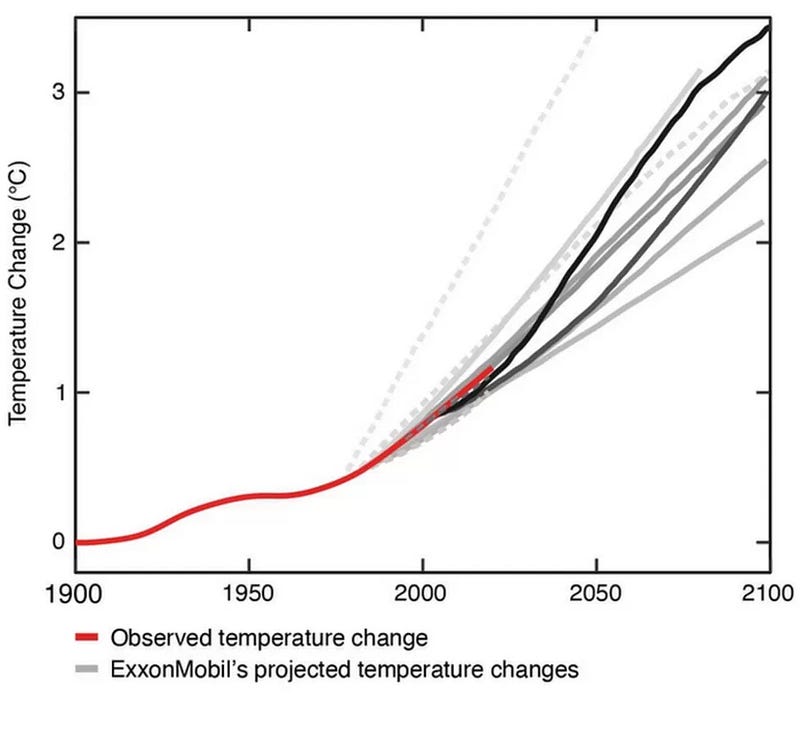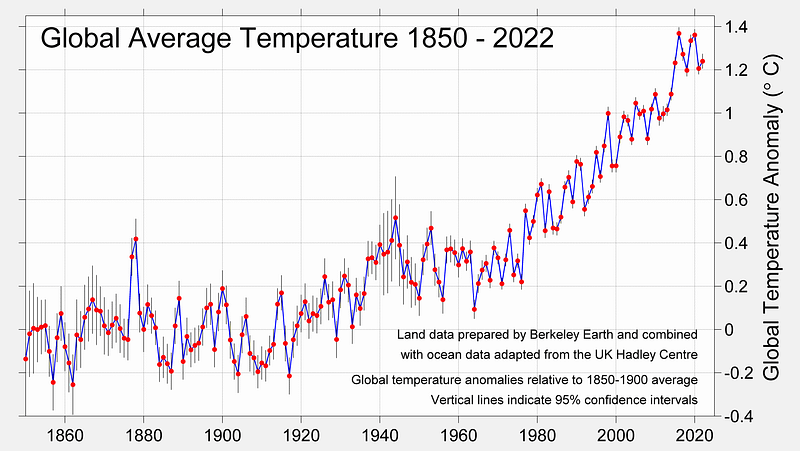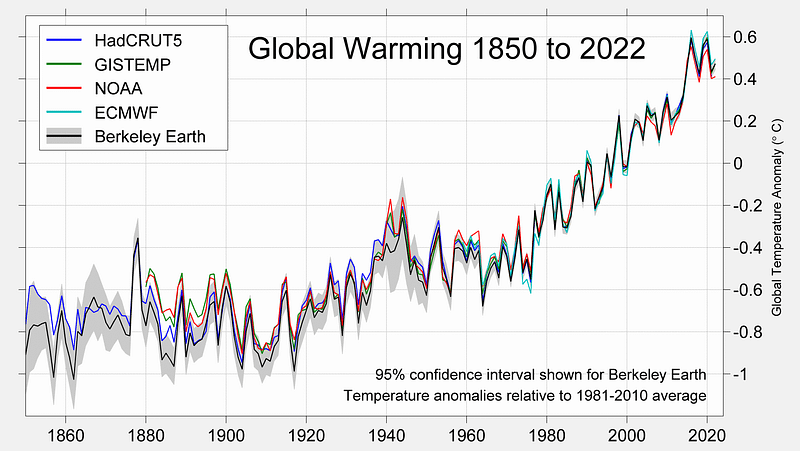# Climate Insights: Past Lessons, Present Realities, and Future Risks
Written on
Chapter 1: Historical Insights
The traffic congestion on the UK's A50 near the M1 is a stark backdrop to the ongoing climate crisis, with the Ratcliffe power station emitting carbon dioxide in the distance. This week, I’ll discuss three significant climate updates, each reflecting different timeframes:
- The Past: Insights from the 1970s
- The Present: The Berkeley Global Review for 2022
- The Future: Projections for the near-term climate scenario
Let’s delve into each of these updates.
Section 1.1: The Past – ExxonMobil’s Early Predictions
When exploring the evolution of our understanding of climate change, one name frequently mentioned is James Hansen. In the 1980s, he contributed to the first comprehensive global temperature analysis by NASA's Goddard Institute for Space Studies (GISS), revealing a significant warming trend. Hansen famously testified before Congress in 1988, confidently asserting a 99% certainty that climate change was real and driven by greenhouse gas emissions.
However, this wasn't the inception of scientific awareness regarding climate change. ExxonMobil had conducted thorough internal research on the subject in the 1970s, accurately forecasting potential outcomes. Despite this, they contributed to a culture of climate change denial.
A notable study titled "Assessing ExxonMobil’s Climate Change Communications (1977–2014)" reveals the company's dual approach: advancing climate science through academic research while simultaneously sowing doubt through misleading advertisements.
The study concludes that ExxonMobil misled the public, even as their scientific assessments were largely correct. Here’s a comparison of their predictions against actual climate data:

Despite having access to crucial information, ExxonMobil chose to misrepresent facts to the public, perpetuating denialism. Their current stance continues to deny accountability, even as research utilizes their own documentation to contradict their claims.
Section 1.2: The Present – 2022 Berkeley Global Temperature Report
The Berkeley Earth organization, a California-based non-profit, has released its analysis for 2022, marking nearly a decade of annual reports. What did the findings reveal?
2022 was recorded as slightly warmer than 2021, making it the fifth warmest year globally since 1850. The last eight years have consecutively accounted for all of the hottest years on record.
The report includes a detailed graph, illustrating:

While fluctuations occur from year to year, the overarching trend clearly indicates persistent global warming. Notably, the El Niño and La Niña cycles significantly impact annual temperature variations, suggesting that the next El Niño could lead to another record-breaking warm year.
For 2022, the report highlighted:
- New national temperature records for 28 countries, including the UK, France, and China.
- Historic warmth in Western Europe, including the first-ever recorded 40°C day in the UK.
- An ongoing La Niña event leading to slightly lower temperatures.
- A March heatwave in Antarctica producing unprecedented temperature spikes.
- Severe droughts in Europe, the US Southwest, and China, along with devastating floods in Pakistan.
Various independent measurements corroborate these findings:

For more details, including raw data for further exploration, you can access the full report.
Chapter 2: Future Projections
As we shift from current conditions to future risks, the outlook is alarming.
Research indicates that a catastrophic increase of 1.5°C in global temperatures is now highly probable within just a few years. However, reaching this threshold is not the final concern.
The real worry lies beyond, with projections suggesting that 20–30% of the Earth could become desert-like as we approach a 2°C rise by the 2030s to 2050s, potentially displacing 2 billion people due to persistent drought.
For further context, refer to the paper titled "Keeping Global Warming Within 1.5 °C Constrains Emergence of Aridification."
Key Point: Is the situation entirely hopeless?
This is the critical takeaway: we still have the power to change our trajectory. The grim projections are not inevitable; they represent potential outcomes unless we take decisive action.
In moments of frustration, such as encountering climate protesters, consider the profound inconvenience and devastation that could arise if we do nothing to address these pressing climate issues.
The first video, Climate Change: Past, Present, and Future, explores how historical insights inform our understanding of the current climate crisis and its future implications.
The second video, The Past, Present, and Future of Climate Change, discusses the evolution of climate science and the importance of addressing climate change today.